These striped invaders have found something in your neighborhood that’s better than the wilderness.
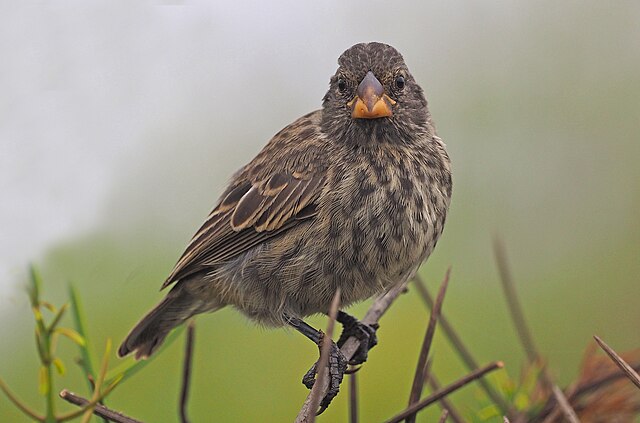
Most people think of vampires as creatures of gothic fiction or maybe South American bats hanging upside down in caves. But tucked away on two impossibly remote volcanic islands in the Galápagos, ordinary-looking finches have turned themselves into real-life bloodsuckers. These tiny birds, no bigger than your palm, regularly pierce the skin of massive seabirds and drink their fill like feathered Draculas. Their transformation from innocent seed-eaters to blood-drinking opportunists represents one of evolution’s most bizarre plot twists, proving that sometimes nature’s creativity exceeds even our wildest horror movie imagination.
1. Darwin’s famous finches took a seriously dark turn on two forbidden islands.
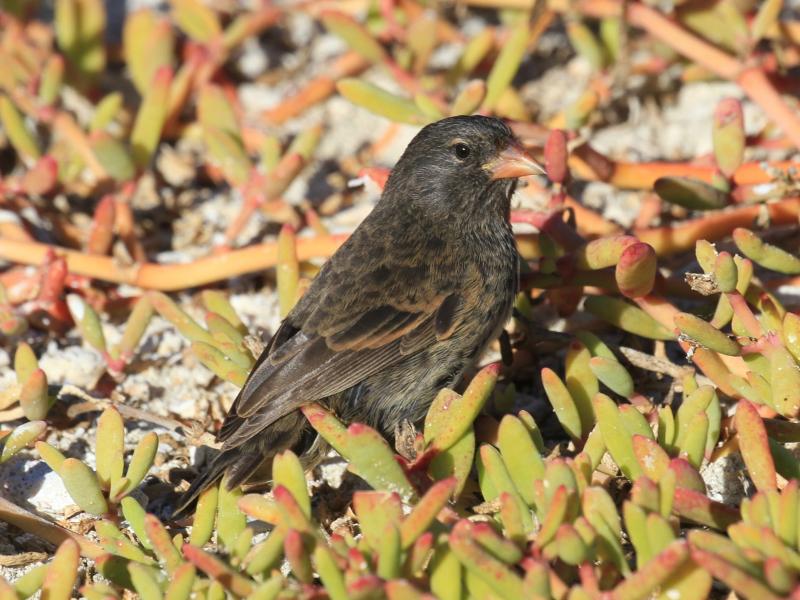
According to the Galápagos Conservation Trust, vampire finches are found only on Wolf and Darwin, the two northernmost islands of the archipelago and remote even by Galápagos standards, where both islands are tiny, each less than a square mile, and are separated from the larger islands by 100 miles of open ocean. These aren’t the cheerful little finches that helped Darwin develop his theory of evolution – those live on the bigger, more hospitable islands where tourists can actually visit. Wolf and Darwin islands are so isolated and forbidding that even scientists rarely make the treacherous journey to study them.
The isolation created a perfect evolutionary laboratory where normal rules stopped applying. No permanent freshwater exists on either island, food sources disappear entirely during dry seasons, and the only abundant life forms are massive seabird colonies that nest on the rocky cliffs. When your ancestors were seed-eating songbirds but you’re trapped on barren volcanic rocks with nothing but giant birds for company, evolution starts getting creative fast.
2. Sharp beaks evolved specifically for skin-piercing and blood-sucking duties.
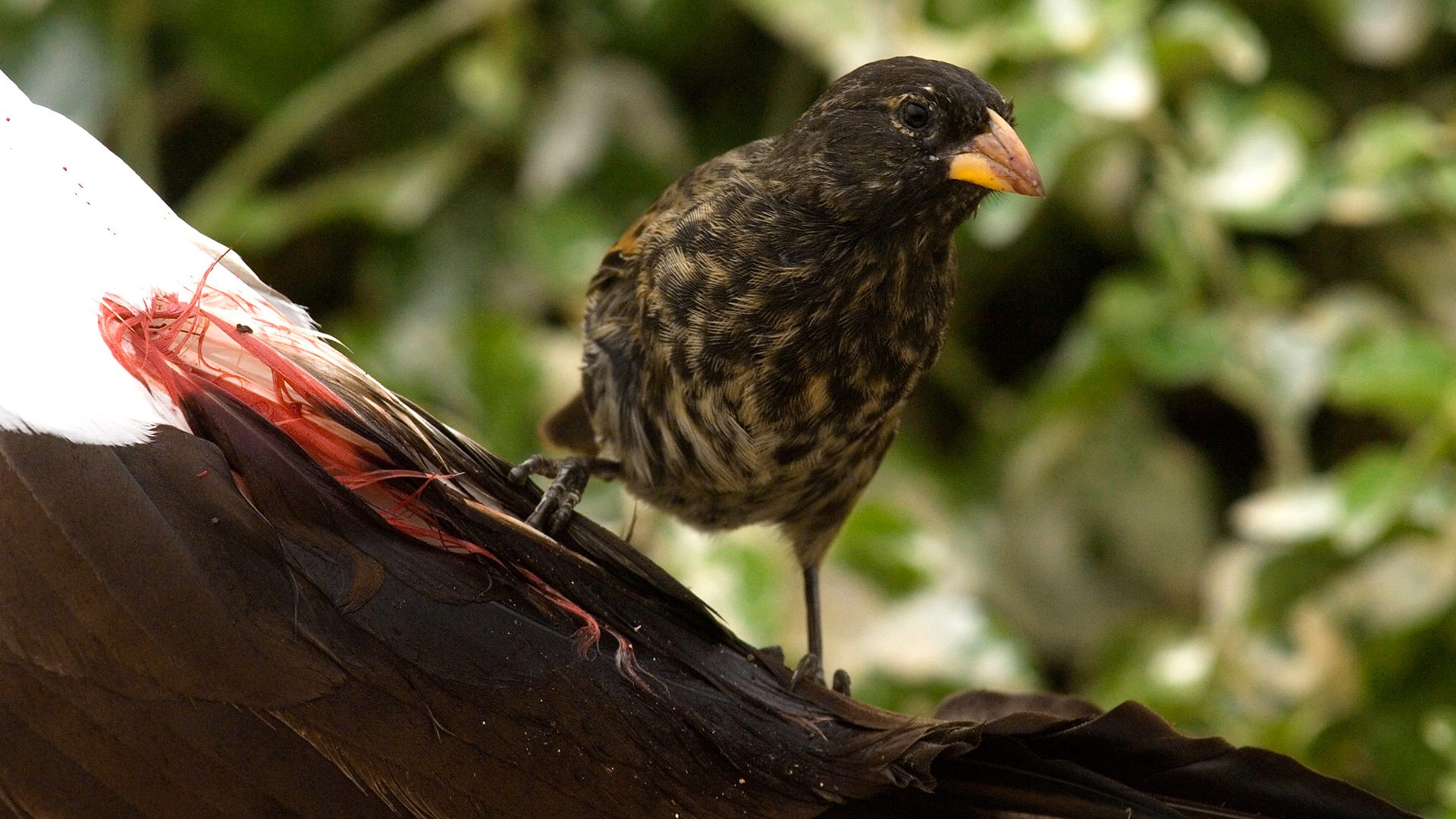
Natural selection has fine-tuned the vampire finch beak for their gory lifestyle, developing particularly long and pointy beaks compared to non-blood-feeding populations on other islands, as reported by researchers from the Natural History Museum. The transformation wasn’t accidental – these birds literally grew stabbing implements where their relatives have nutcracker-style beaks for seeds. Their bills became precision instruments designed for one primary function: puncturing tough seabird skin and accessing the flowing blood beneath.
But the beak modification was just the beginning of their physiological makeover. Once you’ve evolved the tools to pierce skin, you need the internal plumbing to handle a liquid diet that would kill most other birds. Their digestive systems underwent radical changes to process blood efficiently, developing gut microbiomes completely different from any other Darwin’s finch species. Evolution essentially performed surgery on these birds, inside and out.
3. Scientists discovered finches with gullets literally full of fresh blood.
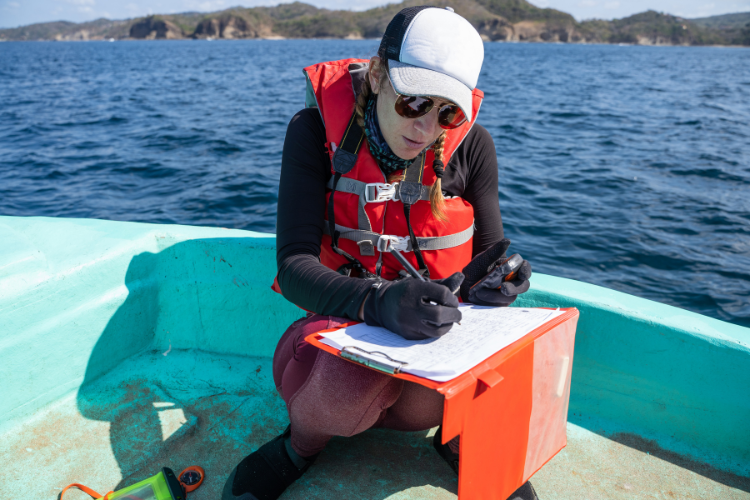
When researchers captured vampire finches to collect samples, they found gullets full of blood and beaks stained red, making it evident that the little vampires were not merely lapping up a few drops, according to studies published by the Galápagos Conservation Trust. The image of opening up a cute songbird only to find its throat packed with warm blood sounds like something from a nature-themed horror movie. Yet this represents their normal feeding behavior during lean times when traditional food sources become scarce.
The blood comprises roughly ten percent of their total diet, which means these aren’t occasional opportunistic sips but regular, substantial meals. Researchers watched in fascination as scores of vampire finches clambered all over the backs, tails, and wings of massive boobies, opening substantial wounds with their razor-sharp beaks and drinking their fill. The feeding frenzy resembles a scene from a zombie apocalypse, except the zombies are adorable and have wings.
4. Boobies basically ignore getting their blood sucked by tiny vampires.
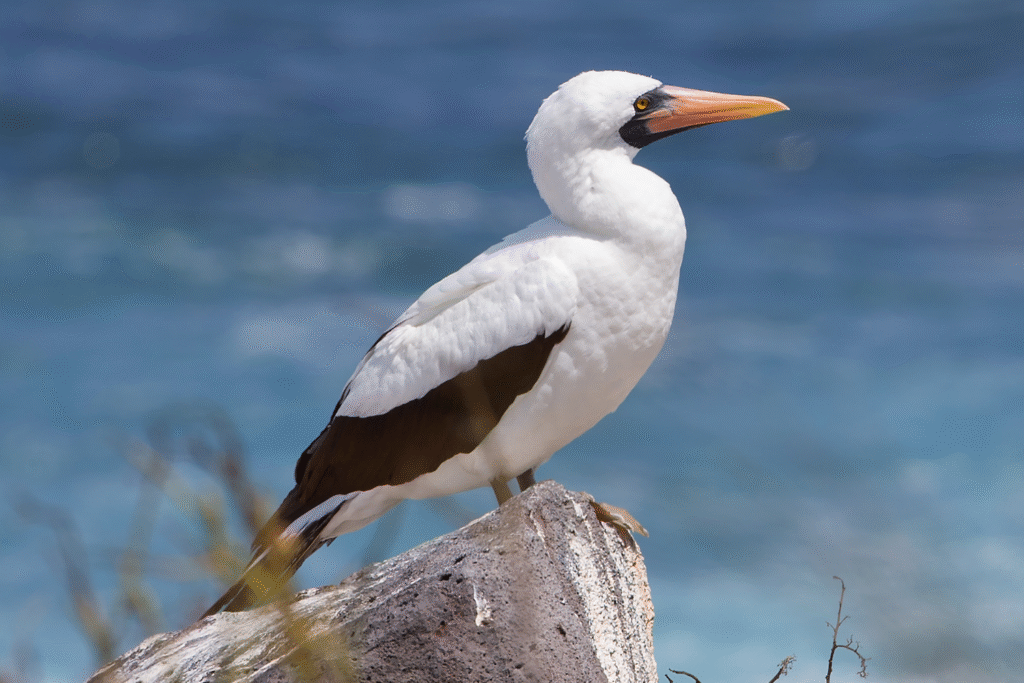
The most bizarre aspect of this relationship isn’t the blood-drinking itself, but how utterly unbothered the victim birds seem about the whole situation. Nazca boobies and red-footed boobies sit calmly while half a dozen finches peck holes in their skin and lap up the flowing blood. They don’t fight back, rarely try to escape, and often continue their normal activities as if nothing unusual is happening.
This tolerance likely stems from evolutionary confusion more than acceptance. The boobies probably still interpret the finches as helpful cleaners removing parasites, which was almost certainly how this behavior began. By the time the finches graduated from eating ticks to drinking blood directly, the boobies had already evolved to tolerate small birds crawling all over them. The victims remain oblivious that their supposed helpers turned into tiny vampires.
5. Parasite removal services gradually transformed into full-blown vampirism.
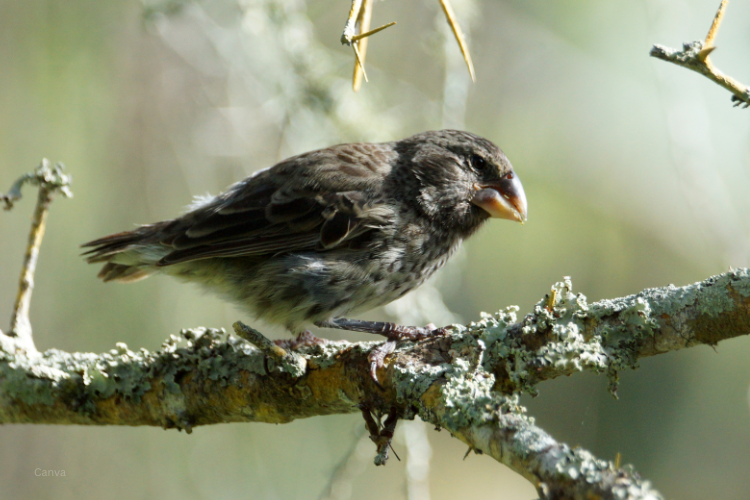
The transition from helpful cleaning to blood-sucking probably happened so gradually that neither species noticed the change until it was already established. Originally, finches provided valuable services by eating parasites, ticks, and other pests from the feathers and skin of larger seabirds. This mutualistic relationship benefited everyone involved – boobies got pest control, finches got protein-rich meals, and the ecosystem maintained balance.
Somewhere along the evolutionary timeline, industrious finches discovered that making small cuts while cleaning parasites provided access to an even richer food source. The leap from eating blood-gorged ticks to drinking blood directly represents a remarkably small behavioral step with enormous consequences. What started as community service evolved into prehistoric vampirism, proving that good intentions can lead to some very dark places.
6. Egg theft adds another layer to their increasingly criminal resume.
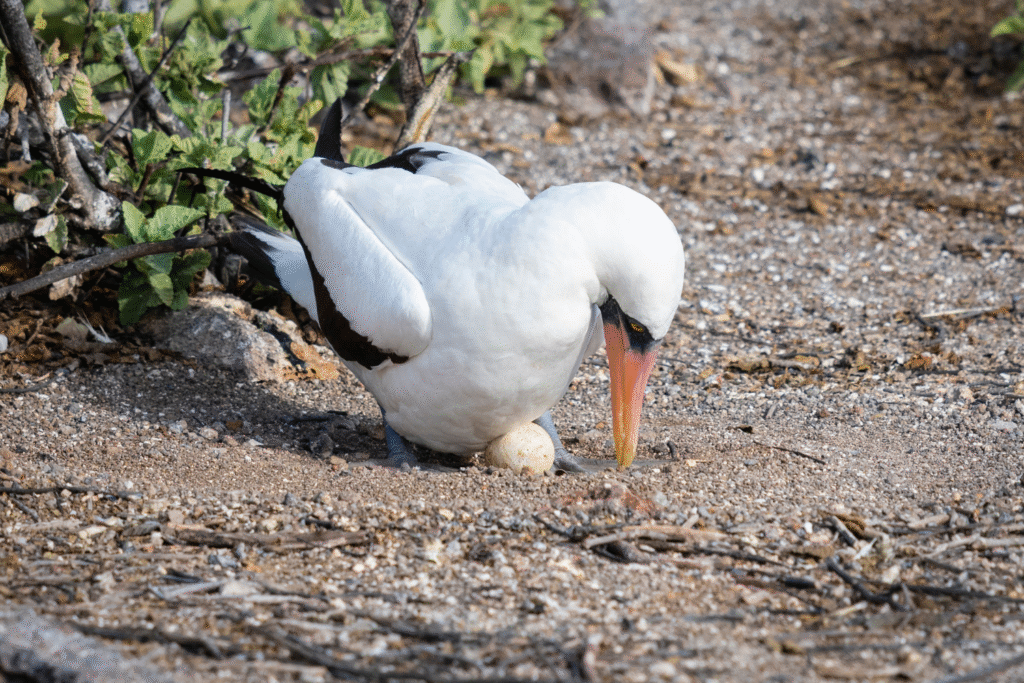
As if blood-drinking wasn’t enough, vampire finches also perfected the art of egg robbery, stealing booby eggs immediately after they’re laid and developing ingenious techniques for cracking them open. Since their sharp beaks can’t break through tough eggshells directly, the finches invented a brutal but effective method involving strategic use of the rocky landscape. They roll stolen eggs against jagged lava rocks using their beaks as levers and their legs for pushing power.
This behavior reveals remarkable problem-solving intelligence that goes far beyond simple opportunism. The finches identified a valuable food source, recognized the mechanical challenge it presented, and developed tool-use strategies to overcome the obstacle. They’ve essentially become tiny criminals running protection rackets on seabird colonies – first they drink your blood, then they steal your children.
7. Two populations developed completely different vampire accents.
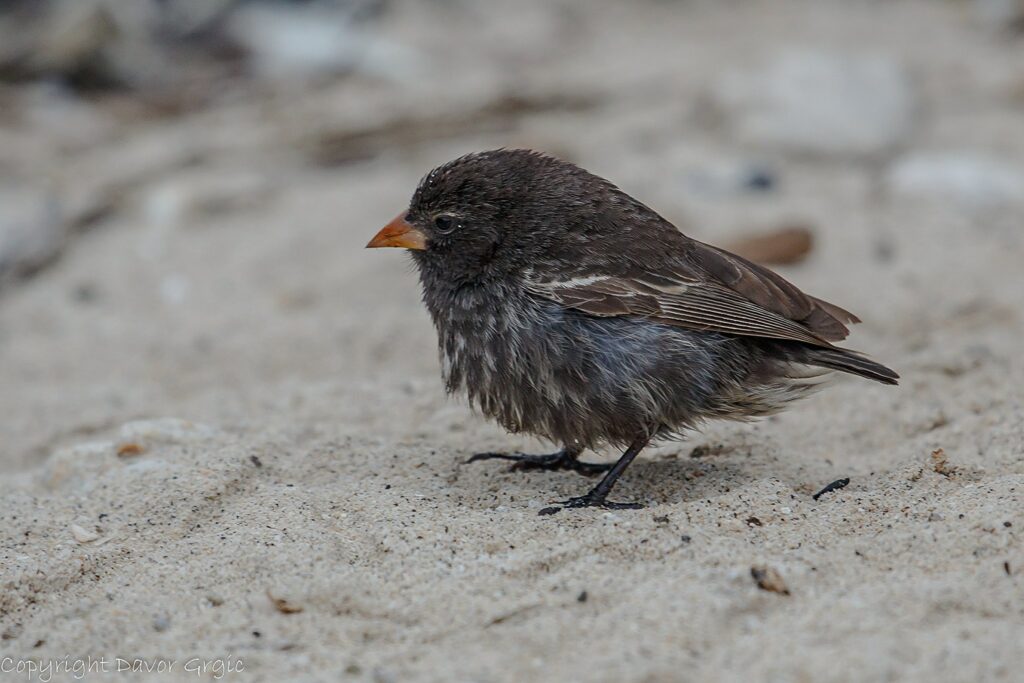
The Wolf Island and Darwin Island vampire finch populations have evolved distinct vocalizations, with Wolf birds producing long, melodious calls while Darwin finches make buzzing sounds that researchers describe as distinctly less musical. This vocal divergence happened in just a few hundred thousand years, which represents lightning speed in evolutionary terms. The different songs suggest these populations are actively diverging into separate species despite their shared blood-drinking habits.
The acoustic evolution adds another layer of intrigue to their story. Not only did these finches independently develop vampiric tendencies on two different islands, but they’re also creating unique cultural identities through their songs. It’s like discovering that vampire clans in neighboring castles developed different accents while perfecting their blood-drinking techniques. Evolution apparently has a sense of dramatic flair.
8. Climate change and water scarcity drove desperate finches to extreme measures.

The harsh environmental conditions on Wolf and Darwin islands – including virtually no freshwater and food sources that disappear entirely during dry seasons – created evolutionary pressure that pushed these finches toward increasingly desperate survival strategies. Blood became not just food but also a crucial source of hydration in an environment where traditional water sources are practically nonexistent. Drinking blood solved two critical survival problems simultaneously.
This environmental pressure explains why vampire finches evolved on these specific islands rather than the more hospitable main Galápagos chain. When your habitat regularly becomes uninhabitable for months at a time, survival requires extreme adaptations. The finches that figured out how to tap into the abundant seabird biomass survived and reproduced, while their more conservative relatives probably starved during extended dry periods.
9. Modern research requires hazardous landings on vertical cliff faces.

Scientists studying vampire finches must undertake some of the most dangerous fieldwork in ornithology, approaching sheer volcanic cliffs in small boats and jumping onto sharp lava rocks during brief breaks in ocean swells. The islands lack beaches, landing strips, or any infrastructure that would make access remotely convenient. Researchers literally have to time ocean waves and leap from dinghies onto jagged rocks while carrying scientific equipment.
This extreme isolation explains why vampire finches remained relatively unknown until recent decades despite living on islands that Darwin himself visited. The logistics of reaching Wolf and Darwin islands are so challenging that even dedicated scientists rarely attempt the journey. The finches evolved their blood-drinking behavior in almost complete secrecy, hidden away on islands too dangerous for casual observation.
10. Vampire finches prove that evolution never stops surprising us.
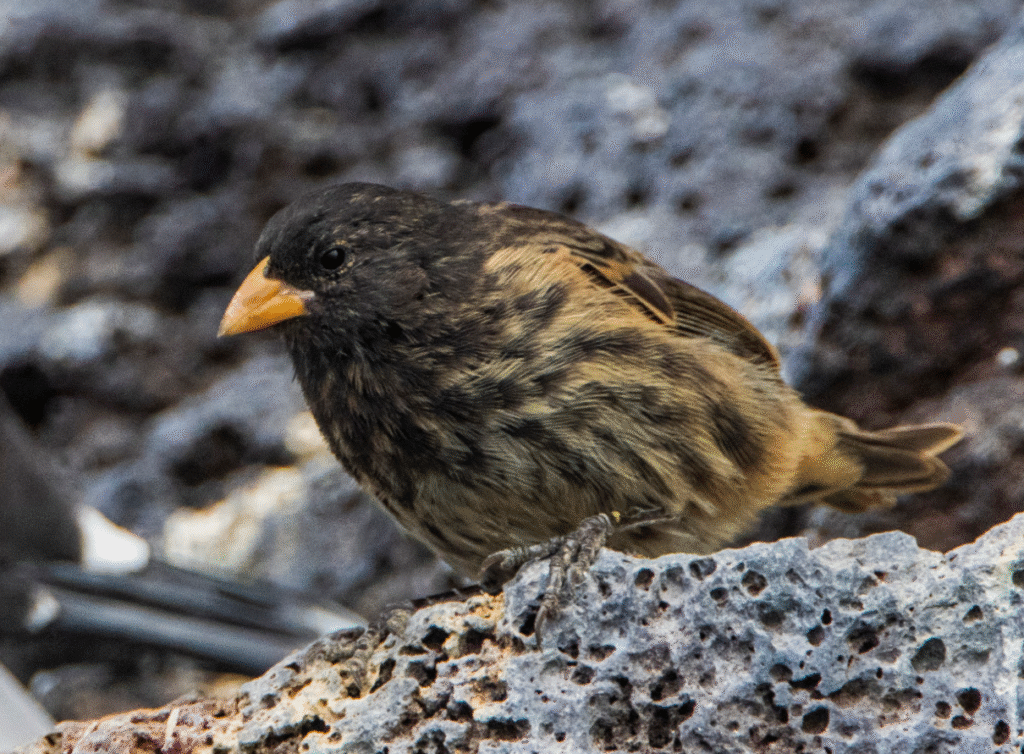
The existence of blood-drinking songbirds challenges our assumptions about how evolution works and what’s possible in the natural world. These finches demonstrate that dramatic behavioral and physiological changes can happen relatively quickly when environmental pressures are severe enough. They’ve essentially reinvented themselves as tiny vampires while retaining all the basic characteristics that make them recognizably finches.
Their story also highlights how isolation and extreme environments can drive evolution in completely unexpected directions. No one could have predicted that cute little seed-eating birds would develop into blood-sucking specialists, yet here we are. The vampire finches serve as a reminder that nature’s creativity exceeds our imagination, and evolution continues writing plot twists that would make even the best horror novelist jealous.
